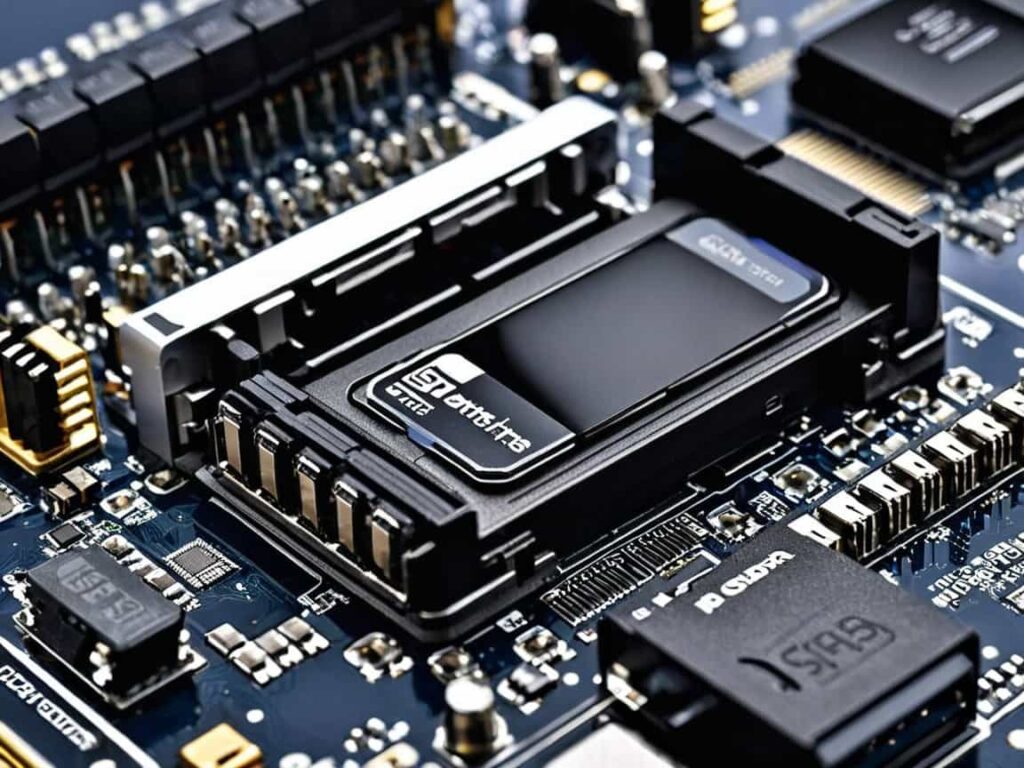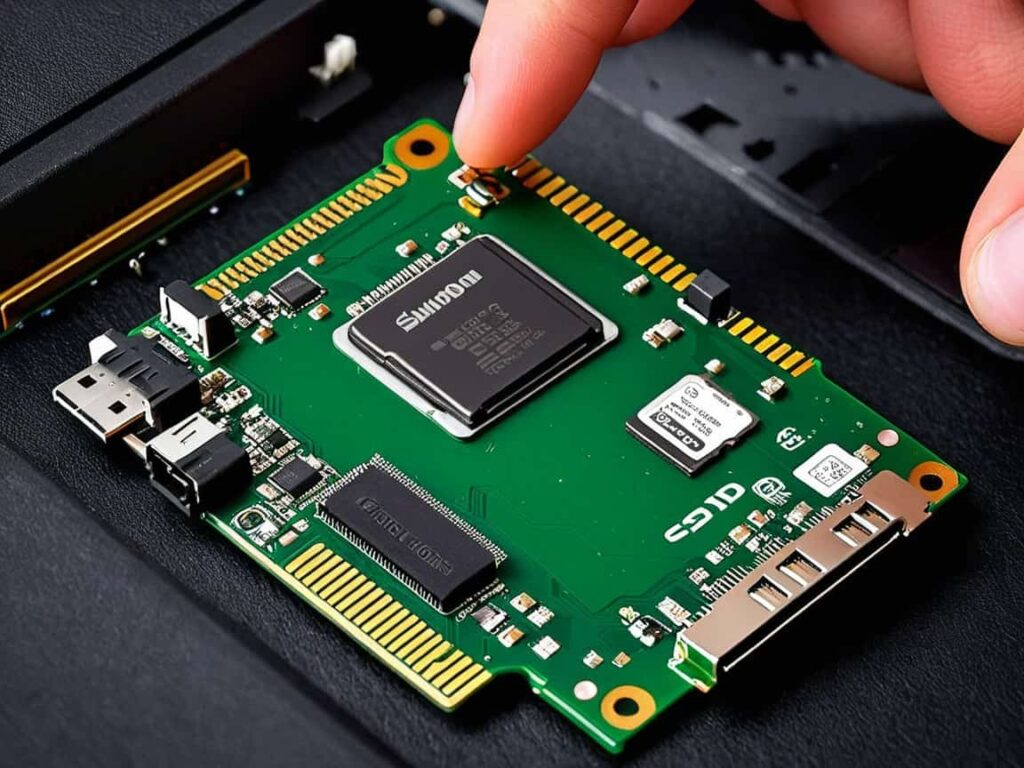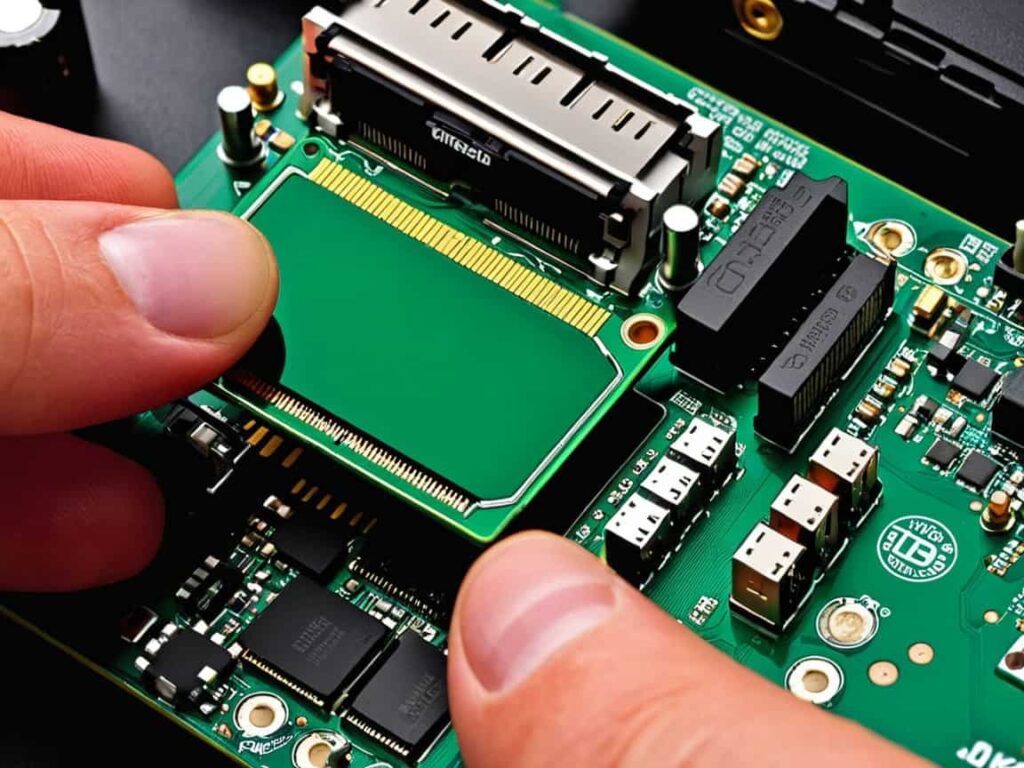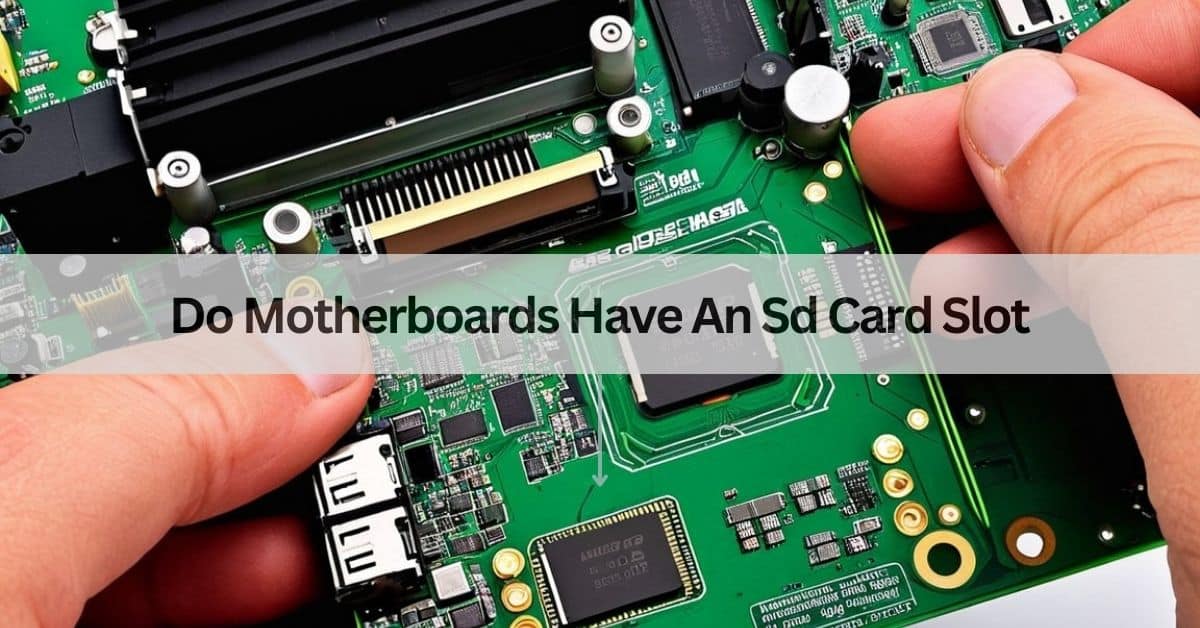I once wondered if motherboards had SD card slots when I needed a quick way to transfer files. After checking my setup, I realized most motherboards don’t include them, but external card readers work perfectly.
Most motherboards do not have a built-in SD card slot. If you need one, you can use an external card reader or choose a computer case with an SD card slot.
In this article, we will discuss “Do Motherboards Have An SD Card Slot”.
Table of Contents
Can You Find SD Card Slots on Motherboards?

Most motherboards do not come with built-in SD card slots. While some specialty or high-end models may include them, they are generally uncommon. Most users rely on external SD card readers or other solutions for their file transfer needs.
Read More: Is Pci5.0 Motherboard Nessccesary – Find Out Now!
Why Don’t Most Motherboards Have SD Card Slots?
Motherboards are designed to prioritize features that cater to the majority of users. SD card slots are not considered essential for most desktop setups. Here are some reasons why:
Limited Use in Desktop Environments
Desktop users often transfer files using USB drives or cloud storage, making SD card slots less critical.
Port Prioritization
Motherboard space is limited, and manufacturers prioritize essential ports like USB, HDMI, and Ethernet over SD card slots.
Customization Through External Peripherals
External SD card readers are affordable and easy to use, allowing users to add this functionality without compromising motherboard design.
Cost-Effectiveness
Excluding SD card slots helps manufacturers keep costs down and offer competitive pricing for their products.
Is There an SD Card Slot on My PC?
Examine the sides of your desktop tower or laptop to check if your PC has an SD card slot. Look for a slim slot labeled “SD” or “Card Reader.” If you’re unsure, consult your computer’s manual or specifications online.
Does a PC Have an SD Card Slot?
Not all PCs have an SD card slot. Some desktop and laptop computers include it, while others may not. You can check the device specifications or use an external card reader if your PC doesn’t have an SD card slot.
What If My PC Doesn’t Have an SD Card Slot?
If your PC doesn’t have an SD card slot, you can use a USB card reader to connect the SD card. Simply plug the reader into a USB port, and you’ll be able to access your files just like you would on a PC with an SD slot.
Which Motherboards Come with SD Card Slots?
While uncommon, certain motherboards and PCs may feature SD card slots:
Mini-PC Motherboards
Mini-PC motherboards are compact boards designed for small computers. They support essential parts like processors, memory, and storage. These boards are perfect for building space-saving computers without sacrificing performance.
All-in-One PCs
All-in-One PCs combine the computer and monitor into one unit. They are space-saving and easy to use, with fewer cables. These PCs are good for home or office work, offering simplicity and convenience.
High-End Specialty Motherboards
High-end specialty motherboards are designed for specific needs, offering advanced features, better performance, and support for demanding tasks. They cater to enthusiasts, professionals, or specific industries requiring high reliability and enhanced capabilities.
How Do I Know If My Computer Has an SD Slot?
To check if your computer has an SD slot, look for a thin slot labeled “SD” on the sides or front of laptops, or near USB ports on desktops. If unsure, check your computer’s manual or specifications for details about supported features.
How Do I Tell If My PC Has an SD Card Slot?
To check if your PC has an SD card slot, look at its sides or front panel for a narrow rectangular port marked “SD.” If it’s not visible, check the specifications online or in the user manual for details about supported features.
Where to Put a Memory Card in the Motherboard?
Find the slots made for memory modules to insert a memory card into a motherboard. Push the card gently into the slot until it clicks into place. Make sure the card matches the slot type and check the user guide for correct placement.
How to Use an SD Card with a Motherboard That Lacks an SD Card Slot?

If your motherboard lacks an SD card slot, here are some solutions:
USB SD Card Readers
A USB SD card reader is a device that connects an SD card to a computer or other device through a USB port. It helps transfer files between the SD card and the device easily.
Internal SD Card Readers
Internal SD card readers are devices inside computers that allow you to read and write data from SD cards. They are useful for transferring photos, videos, and files from your camera or phone to your computer.
PCIe SD Card Adapters
PCIe SD card adapters let you connect SD cards to your computer using a PCIe slot. This helps with faster data transfer, making it easier to access and manage large files or media.
Advantages of PCIe SD Card Adapters Include:
- Faster data transfer speeds.
- Support for multiple card types.
- Professional-grade reliability.
Read More: Can Your Motherboard Use Any SSD – Find Out Now!
Does the CPU Have an SD Card Slot?
No, the CPU does not have an SD card slot. SD card slots are usually found on motherboards, laptops, or external card readers. These are used to read and write data on SD cards, but the CPU does not handle this directly.
How to Choose the Right SD Card Solution?
When selecting an SD card solution, consider the following:
Frequency of Use
Frequent users may prefer internal or PCIe solutions due to their convenience, allowing for faster access and continuous use without the need for plugging and unplugging devices.
Workspace Organization
External card readers offer the advantage of portability and ease of use, as they do not require internal installation. This helps maintain a clean and organized workspace, avoiding unnecessary clutter.
Data Transfer Speed
If data transfer speed is a priority, PCIe adapters or high-speed USB card readers are the best choices. These solutions provide faster data rates compared to standard external models, making them ideal for large file transfers or professional-level tasks.
Budget
External card readers tend to be more budget-friendly, offering a cost-effective solution for users who need occasional use. In contrast, internal and PCIe card readers usually come at a higher price point, but they offer enhanced performance and stability for frequent use.
Where Is the SD Card Slot on a Desktop Computer?
The SD card slot on a desktop computer is often located on the front panel of the case, near the USB ports. If it’s not there, your desktop might not have one, and you’ll need an external SD card reader to use SD cards.
Can SD Card Slots Be Added to a Motherboard?

Yes, SD card functionality can be added using:
- USB SD card readers.
- Internal card readers.
- PCIe adapters.
These options provide flexibility without requiring motherboard replacement.
Read More: Am5 Motherboard Tier List – Best To Worst Ranked!
FAQs:
1. What makes high-end specialty motherboards different?
High-end specialty motherboards offer extra features like better power delivery, support for advanced components, and specialized ports. They are built for performance and reliability in demanding tasks.
2. Are high-end specialty motherboards only for gamers?
No, high-end motherboards are used by professionals, content creators, and anyone needing extra power and capabilities for workstations or specific applications, not just gaming.
3. Do Motherboards Have An Sd Card Slot?
Upgrading to a high-end motherboard is possible, but you need to check compatibility with your other components, such as the CPU and RAM, to ensure they work together.
4. How do I choose the right high-end motherboard?
Look for the features that match your needs, such as support for faster connections, more ports, or specialized components. Also, consider your budget and compatibility with other hardware.
5. Are high-end specialty motherboards worth the price?
If you need extra performance or specific features for professional tasks or high-demand gaming, a high-end motherboard can be a good investment in its reliability and capabilities.
6. Can high-end motherboards improve system performance?
Yes, they can offer better stability, faster data transfer speeds, and more efficient power management, improving overall system performance, especially for heavy tasks or multitasking.
Conclusion:
High-end specialty motherboards are a great choice for those seeking top-tier performance and reliability. They provide enhanced features that cater to professional workstations, heavy multitasking, and specific technical needs. While they come at a higher price, their benefits in stability, speed, and efficiency make them worthwhile for demanding users.
